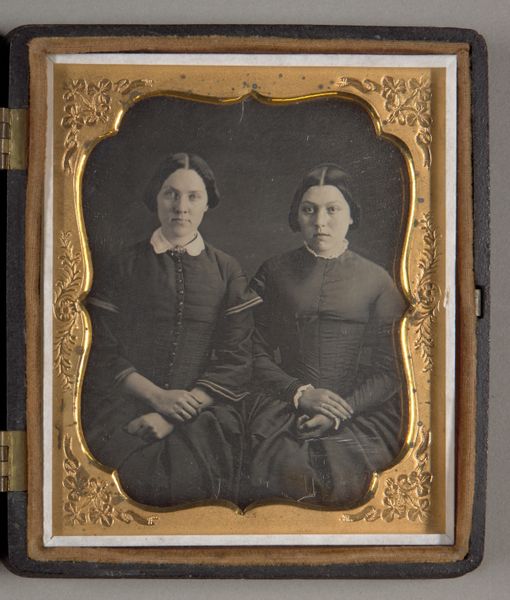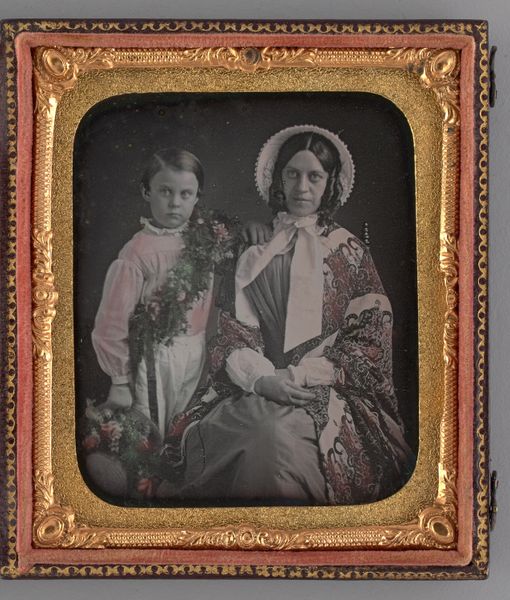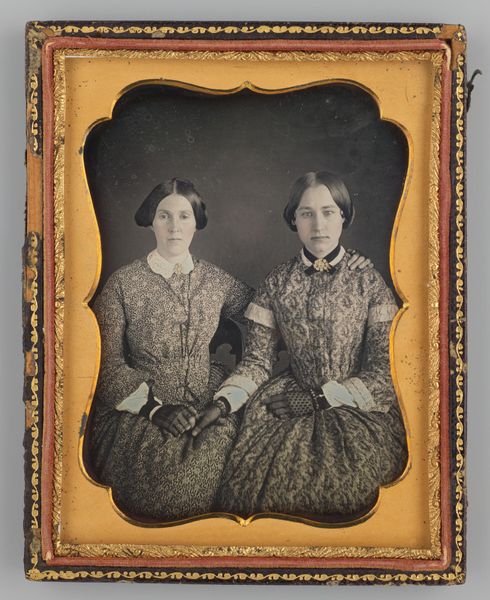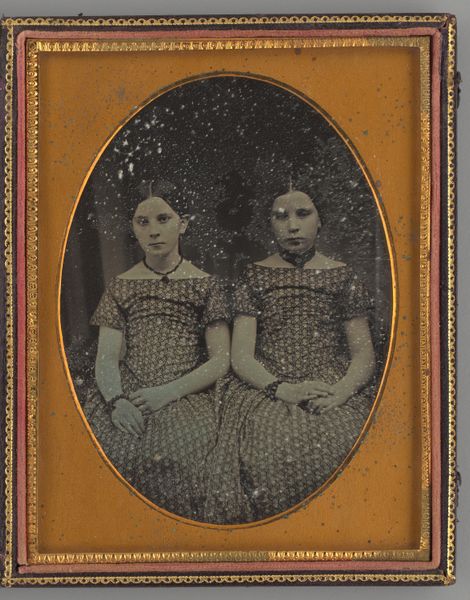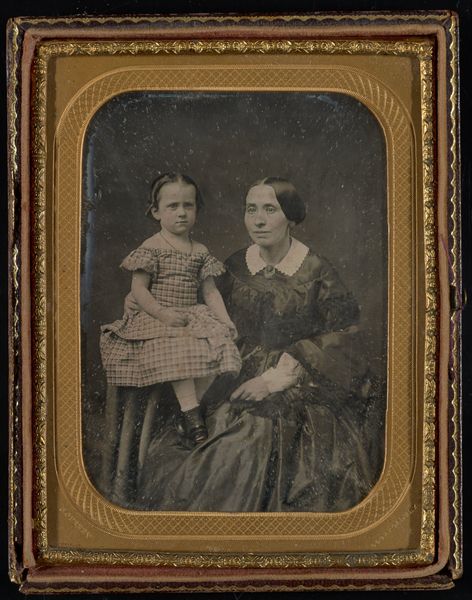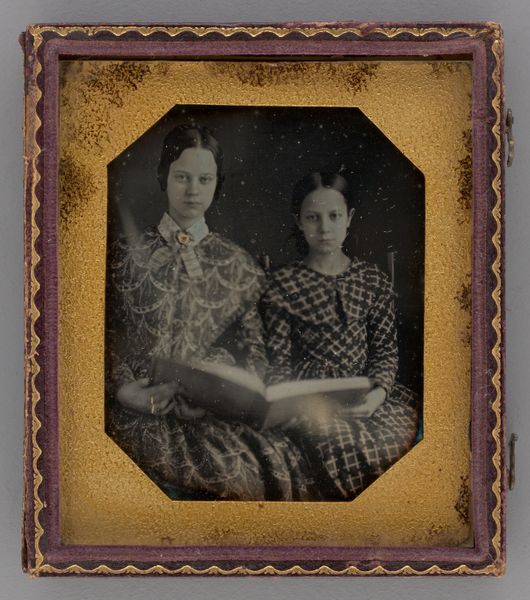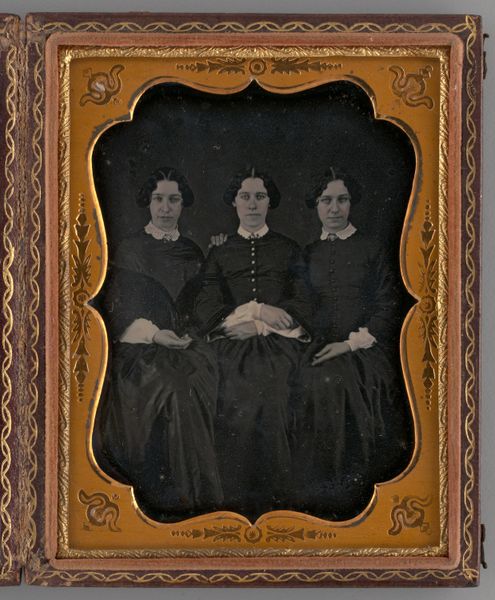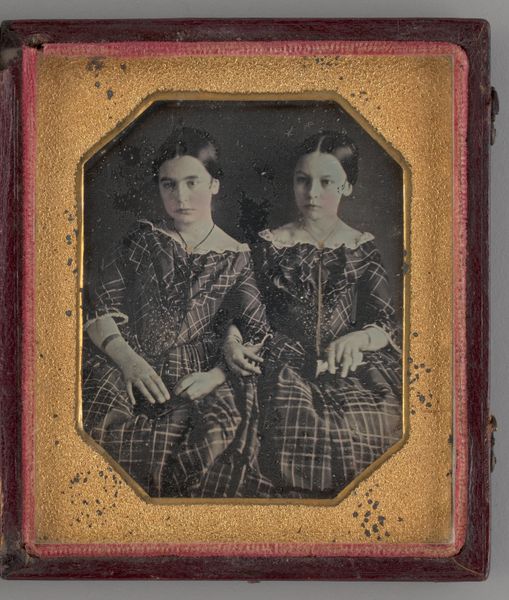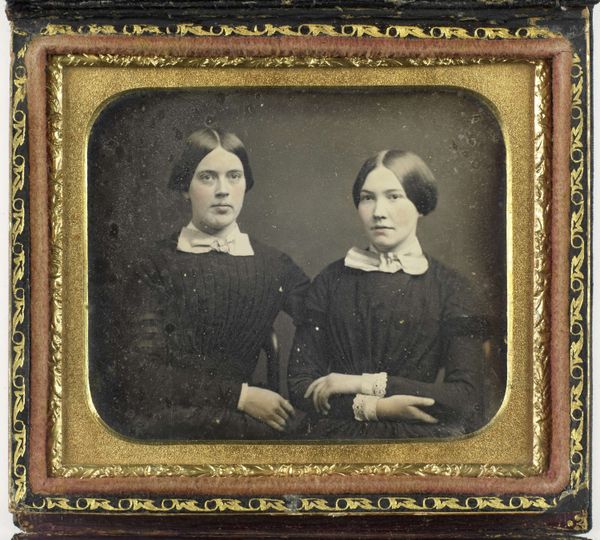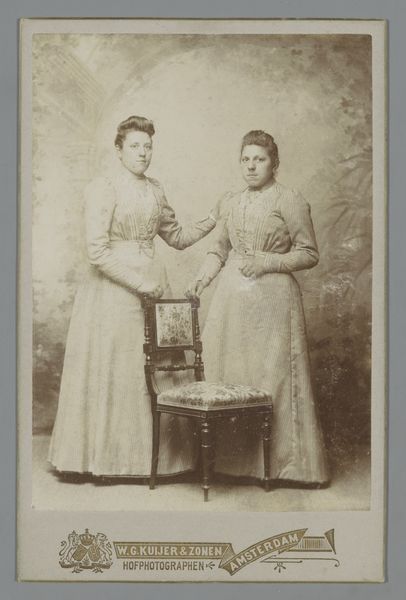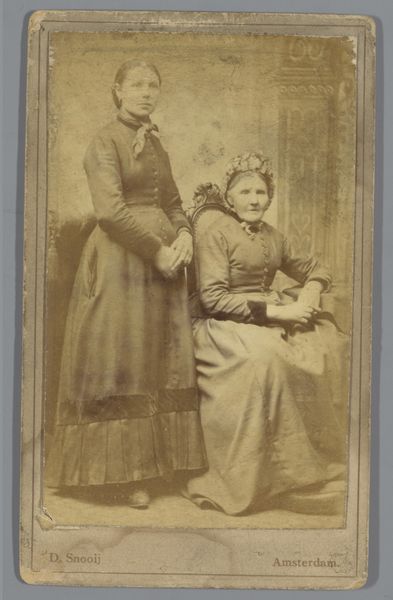
daguerreotype, photography
#
portrait
#
16_19th-century
#
sculpture
#
daguerreotype
#
photography
#
geometric
Dimensions: 10.8 × 8.3 cm (plate); 12.4 × 10.4 × 2.2 cm (case)
Copyright: Public Domain
Curator: This daguerreotype, held in the collection of the Art Institute of Chicago, remains simply titled "Untitled," and was likely created sometime between 1839 and 1860. It’s an early example of photographic portraiture. What strikes you initially? Editor: There’s a quiet formality, almost a somberness. The low contrast and soft focus contribute to this, creating a muted emotional palette despite what appears to be quite decorative, if restrained, attire on both figures. Curator: Precisely. Consider the meticulous process of daguerreotype creation itself. Each plate was meticulously polished and sensitized. Notice the composition—the mirroring of the two figures creates a balanced geometric relationship within the oval frame, a testament to formal visual order. Editor: I agree, however, to consider this purely as a formal exercise risks obscuring what we can decipher about gender and social roles. During this period, the act of posing for a photograph—especially for women—was highly coded. Their carefully chosen attire and restrained posture reflect societal expectations. Their possible familial connection is certainly interesting. I wonder if the lack of attribution can provide an insight? Curator: Certainly. The lack of attribution prompts a deeper inquiry. We can still examine the inherent characteristics within the visible picture frame: tonal distribution and the use of light to sculpt the figures' faces and bodies are all factors which speak for the photographer’s approach to art-making in a very direct and practical way. Editor: But does the very accessibility offered by photography challenge more traditional hierarchies, potentially providing wider portrait representation, to perhaps create self-defined, more inclusive narratives? Their likeness can be distributed. In its own way, the daguerreotype functions as both a formal artifact and a democratizing device. Curator: I find that contrast compelling and valid. A powerful argument on both sides of its potential artistic qualities, regardless of subject. Editor: Indeed, thinking of this portrait's ability to generate further analysis offers another vital perspective for me to think on.
Comments
No comments
Be the first to comment and join the conversation on the ultimate creative platform.
